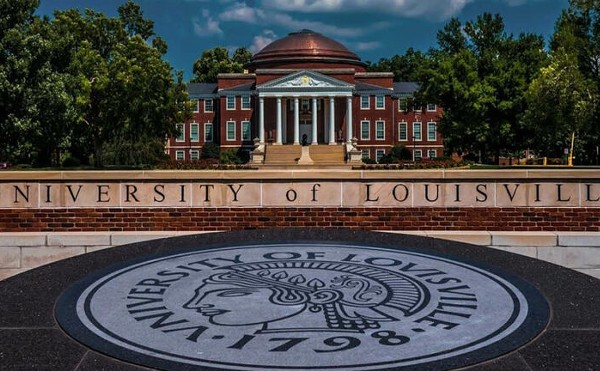Last week, I got to deliver my very first thoroughbred foal on our small Kentucky horse farm. Our mare gave birth to a healthy and adorable chestnut filly, and within an hour, she was running around, learning to manipulate her gawky limbs. If all goes well, she will hit the race track in 2008 right here in Kentucky.
As a small thoroughbred owner and breeder (in addition to my political work), I’ve had the thrill of racing several thoroughbreds here in Kentucky over the past few years and twice experienced the euphoria of standing in the winner’s circle at Keeneland (although I’m still waiting for my first Churchill Downs victory).
But heading into spring racing in Kentucky, horsemen must again wait at least another year in hopes that our political leaders find the courage to help stem the continued bleeding of our signature industry. In states such as Pennsylvania, recently enacted expanded-gaming legislation has reinvigorated its thoroughbred industry by increasing the size of purses, and establishing programs to reward breeders who raise thoroughbreds in-state, as well as the owners who race them there, giving their horsemen an honest chance to make a living.
In fact, two very recent Kentucky Derby winners, Funny Cide and Smarty Jones, are prime examples of such incentives. While both horses were sired by Kentucky stallions, in each case their mares were shipped back to their respective states to give birth (Smarty Jones in Pennsylvania and Funny Cide in New York).
And just a month ago, a record $16 million was paid for a racehorse, a 2-year-old colt named The Green Monkey. The colt was sired by the Kentucky stallion, Forestry, and by a Kentucky-bred mare. However, The Green Monkey’s breeders not only opted to reap the in-state benefits of allowing the colt to be born in Florida but, adding insult to injury, the colt was sold at auction in Florida, allowing that state to keep the $1 million in taxes the sale generated.
What the public often misses is that horse racing in Kentucky exists in two very different worlds.
First, the racing that takes place at Churchill Downs and Keeneland is some of the finest in the world. The purses are large, even for the lower-quality races, and small horsemen know they have an honest shot at paying the bills when racing there.
But once racing moves to Northern Kentucky’s Turfway Park or Western Kentucky’s Ellis Park, the purses are much smaller, and making ends meet for owners becomes much harder, considering the $3,000 average monthly cost of keeping a racehorse in training.
In fact, it’s become commonplace for horsemen to ship their Kentucky-bred horses to New York in the summer and Florida in the winter because those tracks offer higher purses. Absurdly, thanks to expanded gaming, it is now more lucrative for owners of cheaper claiming-level horses to race in West Virginia than to stay here in Kentucky.
Unfortunately, a perception continues to exist that horse racing is still the Sport of Kings that involves wealthy men trading money by purchasing million-dollar horses. No doubt there are many rich people in the industry, but they are greatly outnumbered by the small owners and breeders like me, who race just a few horses or breed a handful of mares.
They are the ones being squeezed out of the picture and finding it increasingly more difficult to make a living in Kentucky, especially when Pennsylvania and New York walk the walk with their efforts to court small horsemen.
Here in Kentucky, our leaders pay lip service to the horse industry, talking up the importance of our “signature industry†but doing little to stem the loss of mares and stallions and sales to other states and countries. The current legislative session did little to seriously address the problem. A similar scenario faced Kentucky’s booming standardbred breeding industry just 30 years ago, when states like New Jersey ramped up their breeding and racing incentive programs. Then, like now, our political leaders failed to step in and take action. The result has been a nearly complete evisceration of standardbreds in Kentucky.
Today, only a handful of standardbred stallions stand here, and what was once a major part of Kentucky is gone, completely, and will never come back.
If it happened with standardbreds, it most certainly can happen with thoroughbreds, and without some real leadership among our political leaders, there will be many more green monkeys in our future as more owners find that the grass is truly greener elsewhere.
Mark Nickolas is a former Democratic political consultant and publisher of Kentucky’s most widely read political blog, BluegrassReport.org. Contact him at [email protected]





